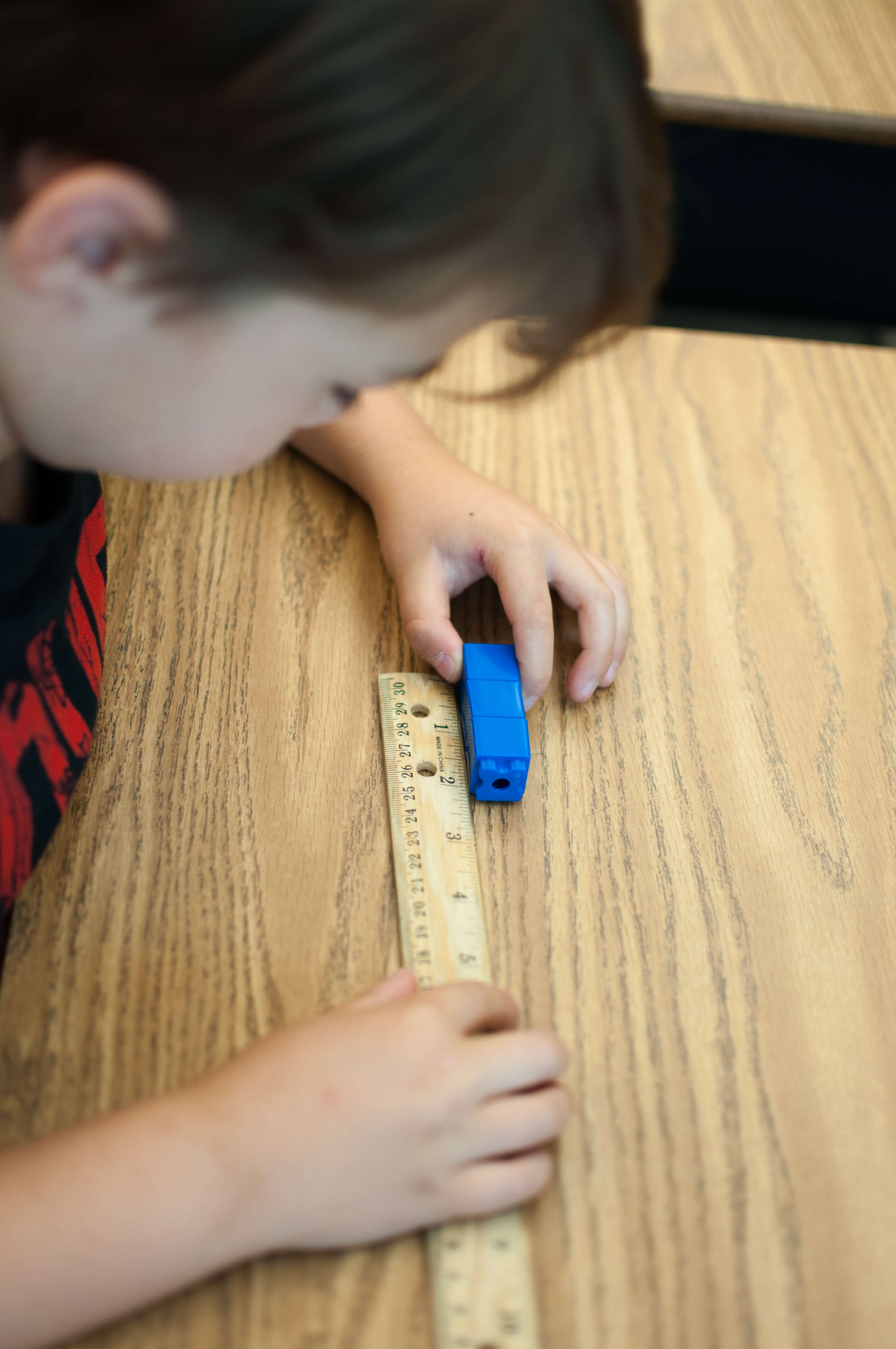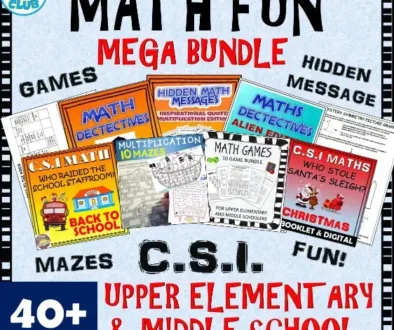5 Ways to Build Mathematical Thinkers in the Elementary Classroom
Guest Post Written By: Gretchen of Always A Lesson
A teacher’s greatest task in the classroom is to help all students learn to think. Oftentimes, the subject of Math lends itself best to memorization of facts and processes instead of encouraging diverse thought. This creates a missed learning opportunity for students when they do not have adequate time and space to develop their thinking muscles in Math as in all other subjects.
Lacking mathematical thinking time creates misunderstanding of concepts and principles for students, which later results in frustration. This negative experience discourages students from liking the subject of Math and developing a desire to invest time to better understand it.
However, when teachers do make time and space for building mathematical thinking muscles in the classroom on a consistent basis, students gain the opportunity to become successful. By deconstructing Math to its most basic level, teachers demystify the dreaded subject and unlock the power of Math in the classroom and life. This then bolsters student attitude and aptitude in Math.
Below are 5 essential best practices teachers can use to build mathematical thinkers in the classroom daily:
Focus on Process Over Product
Arriving at ONE correct answer as quickly as possible discourages students from maturing in their mathematical reasoning. To build such thinking muscles, teachers have to break these past habits and get students to think about ALL of the ways to think through a problem.
Teachers can make answers irrelevant by either giving the answer up front and having students focus on the variety of ways to arrive at that particular answer or by putting more grading credit towards the mathematical strategy used than the final answer. Both of these approaches build students’ confidence in solving Math problems because the anxiety of landing on the one ‘right’ answer is now eliminated from the learning equation- no pun intended! As a result, students develop a desire to solve Math problems and are much more likely to take risks solving trickier problems.
Focusing on the mathematical process over the final product transforms students from memorizing robots to Math wizards!

Model a Variety of Strategies
Teachers should empower their students to explore a variety of problem-solving strategies to help them get out of the habit of memorizing facts or using algorithm methods, as routinely taught in the past. The learning reward is thinking outside of the box and trying on a variety of strategies until students find a way of thinking that makes the most sense for them, even if that particular strategy takes longer or looks different than the norm.
In order for students to have a variety of strategies to try on for size, they need to be exposed to such strategies, which could include the pictorial method, expanded form, working backwards, guess and check, estimation, etc. To do so, teachers should follow this simple process when rolling out one problem-solving strategy at a time to students:
- Direct Instruction– Model the mathematical strategy while students watch
- Guided Practice– Work with students together to solve a few similar problems with the modeled strategy
- Independent Practice– Send students off to work independently on a new set of similar problems using the modeled strategy
Provide Numerous Learning Tools
While students are experimenting with a variety of strategies, it is important that the teacher provide numerous learning tools to aid in the problem-solving process, which could include a number line, hundreds chart, graphic organizer, anchor chart, manipulative materials etc. Even if a student can solve Math problems in their head or without the use of learning tools, it is important to have them show their thinking on paper and experience problem-solving in new ways. When students showcase their thinking, it helps the teacher best target their guidance to help a student increase their mathematical proficiency as well as help their peers more easily see new ways to approach the same problem.
Build in Time to Collaborate
Building mathematical thinking requires communication among individuals to help stretch the brain muscle and look at solving problems from new perspectives. When students explain their own thinking, it deepens their own understanding while helping their peers investigate a new way to solve a problem. This promotes social skill development in a Math setting as students speak, listen and support their peers. While it is important for the teacher to model a mathematical strategy for students, it is just as beneficial for students to share their own unique problem-solving strategies with each other in a student-centered discussion format focused on the benefits and drawbacks of each strategy. This way students leave the discussion with a deeper understanding of their own problem-solving preferences as well as gain new ideas to use in the future. Collaboration in the classroom creates a supportive, safe learning environment to build mathematical thinkers.
Practice, Practice, Practice
Most importantly, practice builds muscle memory and increases efficiency and comfortability in problem-solving. Watching a teacher model a strategy or listening to peers explain their problem solving preferences, does little to advance one’s capabilities because it is passive learning. Students need to be active learners to increase their mathematical capabilities. Therefore, trying out new strategies repeatedly is an essential exercise in creating strong mathematical habits and conceptual understanding in students. They should be encouraged to solve one problem numerous ways to showcase their ability to think from a variety of perspectives while at the same time increasing mathematical skill level.
TIP: This template acts as a graphic organizer to encourage students to solve Math problems using a variety of strategies while encouraging students to think through their problem solving methods for accuracy and efficiency. For repeated use, teachers can place this template in a sheet protector for students to use with a white board marker.
The greatest reward as an educator is to watch students grasp a concept after a struggle and become an expert in their own right. Through dedicated hard work from the students and intention from the teacher, all students can become mathematical thinkers and not just mathematical doers. The 5 best practices mentioned above are sure to unlock the mathematical expertise in every child.
How do you build mathematical thinkers in your own classroom?




